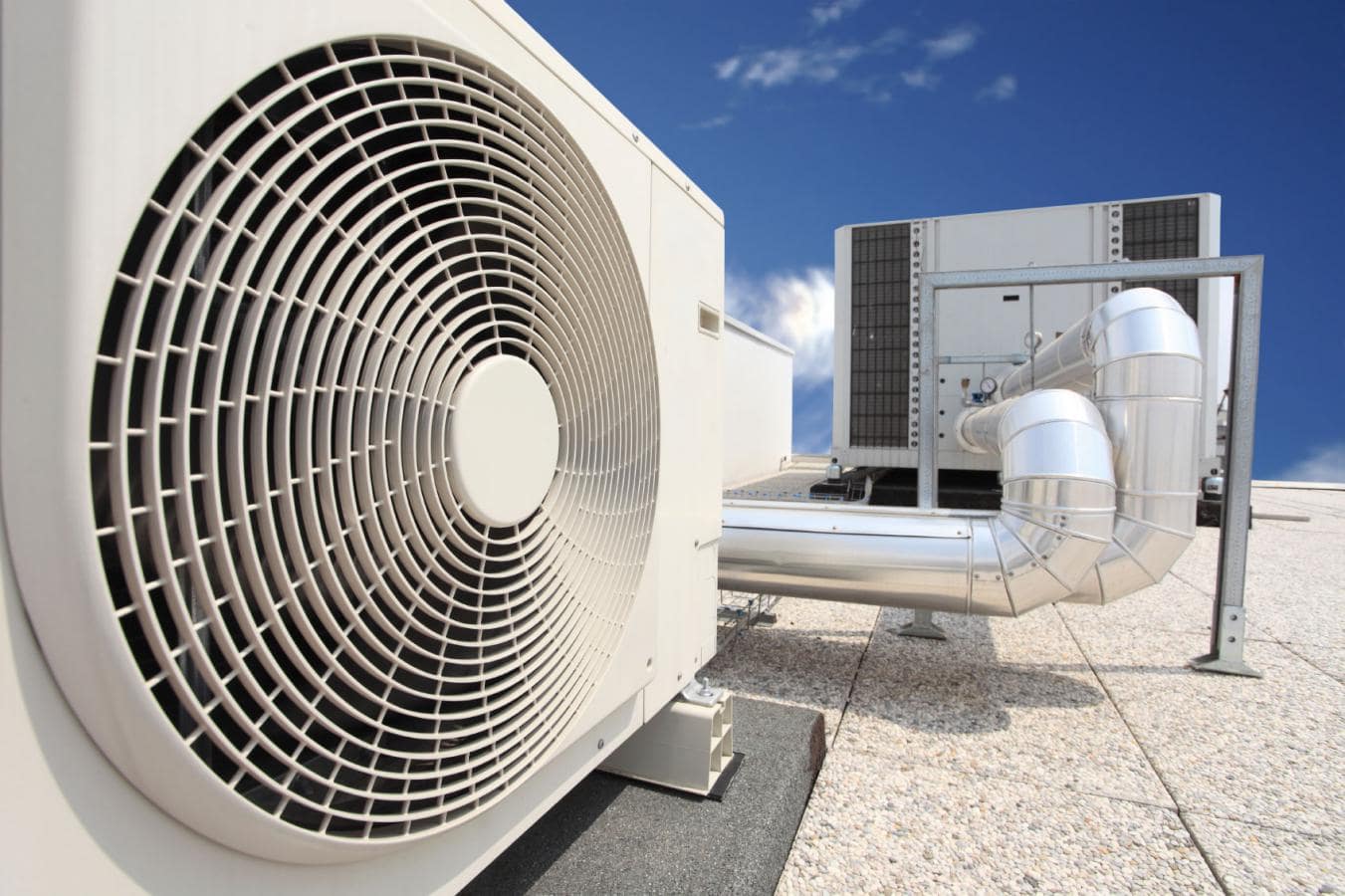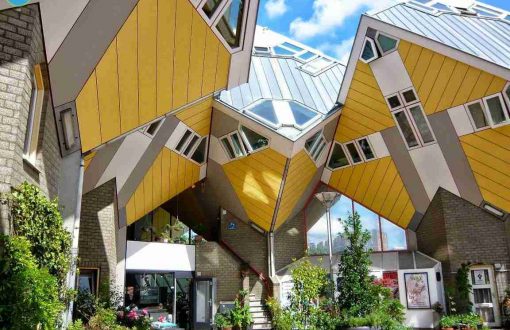Heating and cooling system suitable for your home

What heating and cooling system should we use for the house? What should we pay attention to in order to choose the best heating and cooling device? Which system is suitable and cost-effective?
There are many heating and cooling systems and appliances for the building on the market. These systems provide the required heat in winter and the necessary cold for summer, and their presence in the building is mandatory.
Today, due to the importance of global warming, environmental protection and energy efficiency, in addition to the power and price of heating and cooling equipment, must meet the needs of each building, the most appropriate device in terms of price, energy consumption, Select the basic needs of temperature and humidity and so on.
It is better to know the types and features of each heating and cooling system before choosing the right one for your home, and then start buying. Therefore, in this article, we want to introduce you to different types of cooling and heating systems.
Classification of heating and cooling systems
1- In general, these systems are divided into two categories in terms of application: industrial and non-industrial:
– Non-industrial: These ventilation systems are used in residential, office, store and public places such as restaurants, theaters, hospitals, schools, mosques, etc.
– Industrial: These ventilation systems aim to control the appropriate environmental conditions for research and production work, create an environment for the comfort of people and increase their concentration at work and prevent polluted air from entering the building and prevent the spread of pollutants outside. These systems are used in industries such as textile mills, paper mills, confectioneries, printing and photography industries.
2- Heating and cooling systems based on the seasons of the year:
Winter systems: such as engine room boilers and packages as heat generators, heater units, radiators, underfloor cooling systems, fan coils, air conditioners, etc., which are used as heat exchangers between hot water and indoor air.
Summer systems: such as chillers and mini-chillers that are used to generate cold water and send it to indoor units such as fan coils and air conditioners through piping.
Four-season systems: These systems are a combination of summer and winter. One of them is GHP gas central air conditioning system, VRF electric air conditioning system.
3- Heating and cooling systems in terms of equipment arrangement:
Central air conditioning systems: Central means that heat and cold generating equipment is installed in a place outside the ventilated space, such as the engine room or on the roof. These types of systems include hot water boilers, boilers, hot air furnaces, chillers and mini-chillers.
Single-unit or package systems: In these systems, central and single-unit features and benefits are combined. Such as GHP gas central air conditioning and VRF electric air conditioning
Modern heating and cooling systems
Glass radiator
In traditional architecture, most radiators were installed under windows, which wastes heat energy, but modern architecture tries to optimize energy by using beautiful radiators in ideal sizes.
Central heating system is one of the heating systems that sends heat from the engine room or package to the radiator and heats the space. There are different types of radiators on the market as heat distributors. Glass radiators are among the radiators that not only play an important role in providing heating to the building, but also are used as a kind of decorative radiator. On the glass of these radiators, you can custom engrave the desired image and enjoy its beauty.
Heating systems such as heaters, fireplaces and ordinary radiators should be installed in certain places of the house, but glass radiators allow this system to be installed wherever it fits in with the interior.
The main difference between glass radiators and conventional radiators is the use of piping systems. Due to the lack of piping system in the installation of glass radiators, no energy loss occurs through the pipes. These radiators work in such a way that as soon as they are turned on, all the heat generated is transferred to the house and no extra energy is wasted. In fact, glass radiators are 100% efficient.
Glass radiators do not use any accessories that need maintenance and repair. Unlike other heating systems that need to be serviced after a few months, glass radiators do not require maintenance and there is no cost to maintain them.
There are no space restrictions for installing glass radiators, and the remote control that comes with these radiators provides comfort and convenience for homeowners. Some of these heating systems have a remote control and others are connected to a power outlet with two horns. Radiators that have the ability to control the temperature can be adjusted by a remote control, but uncontrollable models act like ordinary radiators and have only one on / off button. The temperature of these radiators in the factory is set to a certain degree.
The price of a glass radiator is lower than the installation of a floor heating system. These radiators are very efficient and save a considerable amount of energy, so it will be economical to buy a decorative radiator in the long run.
Underfloor heating system
A new home heating system is underfloor heating. This system acts as one of the models in the latest building heating system and installation systems, somewhat like engine room and package. The underfloor heating system heats the hot water by passing it through pipes working on the floor of the unit.
This system takes up virtually no space and distributes heat evenly.
ب
Due to the installation of this new home heating system on the entire floor of the residential unit, heat is distributed throughout the house.
The underfloor heating system can be adjusted manually or automatically for each room with a different program.
This system can also effectively solve the problem of severe cold of the first floors (due to the empty space below).
Disadvantages include high installation costs, difficult repairs in the event of a problem, and the house not heating up as soon as it is turned on. The warm-up process can sometimes take up to 1 hour.
Cornice heating system
The cornice heating system, as a luxury heating device among installation systems, is a good alternative to the radiator heating system and underfloor heating and has no disadvantages between the two.
This heating system can even work with energy and solar water heaters. In fact, cornice heating systems and cornice radiators are designed to work with these energy sources with excellent efficiency.
The heating system through the wall base is not difficult to install, it is efficient and it has small dimensions.
Saving energy, reducing utility piping, transferring heat from the lowest level and speed to heating, and supplying a variety of designs and colors make all cornice heating systems a viable option for the best heating for some units (and even large offices and buildings). For home and the best home heating system.
One of the disadvantages of this system is that the heating system, through the wall base, heats the exterior walls more than any other part of the house. This system limits the placement of appliances; For example, a TV that is very vulnerable to heat. The high cost of the electric model of this luxury heating device is another problem of the cornice heating system.
Home ceiling heating system
Another new building heating system is the home roof heating system, also called radiant heater or radiant heating system. Heat in this new home heating system is often transmitted through infrared waves.
In a radiant heating system, the heat path can be controlled.
The underfloor heating system does not cause air to circulate; As a result, pollution and dust in the space are effectively reduced.
This system heats the environment quickly and evenly, which is also very effective in saving energy. This luxury heating system and device is also extremely suitable and efficient for offices, halls and warehouses.
One of its disadvantages is that the heat is mostly concentrated under the roof and of course its loss through the roof is very high.
Air conditioner cooling system
Gas coolers have more advantages than water coolers. Their most important advantage is the lack of need for water during activity. Therefore, the use of gas coolers will save water consumption. Air conditioners can be divided into two types of portable air conditioners and split based on the possibilities.
One-piece or portable air conditioner
This model is one of the most common and the first generation of gas coolers, which will be a good choice for a small space. To install this air conditioner, part of the window glass will be removed. In this case, half of the body of the air conditioner or the front of the device is placed inside the room and its back is exposed to the open air outside the room.
For this reason, this device is called a window air conditioner (Window Type). Portable air conditioner consists of a compressor with old features. For this reason, one-piece air conditioners consume more electricity than other air conditioners. This cooling system is used in small houses.
Two-piece or split air conditioner
Split gas coolers are installed on the wall and are equipped with air conditioning vents. These coolers also have the ability to adjust and change the temperature to suit the ambient temperature, and this feature has made them more popular. Another interesting and practical point about gas coolers or splits is the ability to adjust the time. By setting the time in the splits, you can specify when the device is turned off and off.
The difference between portable splitters and gas coolers is in their ability to purify the air and absorb excess vapors, available fats and particulate matter. Although splits have many advantages; But significant side costs and high power consumption are the disadvantages of these devices. Splits are designed in two types, cold or hot and cold. You will no longer need heating systems with hot and cold splits. For this reason, these systems are ideal for homes with poor heating systems (especially duplex homes).
Fan coil heating and cooling system
These systems are designed in two types. Some fan coils can be used to cool one part of the environment and heat the other part at the same time, along with air conditioning. In contrast, there are other examples that can only provide cooling or space heating at any given time.
Fan coils can be installed on walls, ceilings or floors and have a high degree of flexibility in this regard.
One of their advantages is independent operation without the need for a central system. These systems also do not require any additional devices or peripherals and will be easy to set up.
Silent operation and complete cleaning of the air are the most important advantages of fan coils.
In addition, fan coils have lower installation, maintenance and repair costs. Because the parts used in its construction are small and their replacement has no special restrictions.
One of the disadvantages of fan coils is the lack of fresh air supply. Fan coils, like gas coolers, can not deliver fresh air to the environment and return ambient air.


